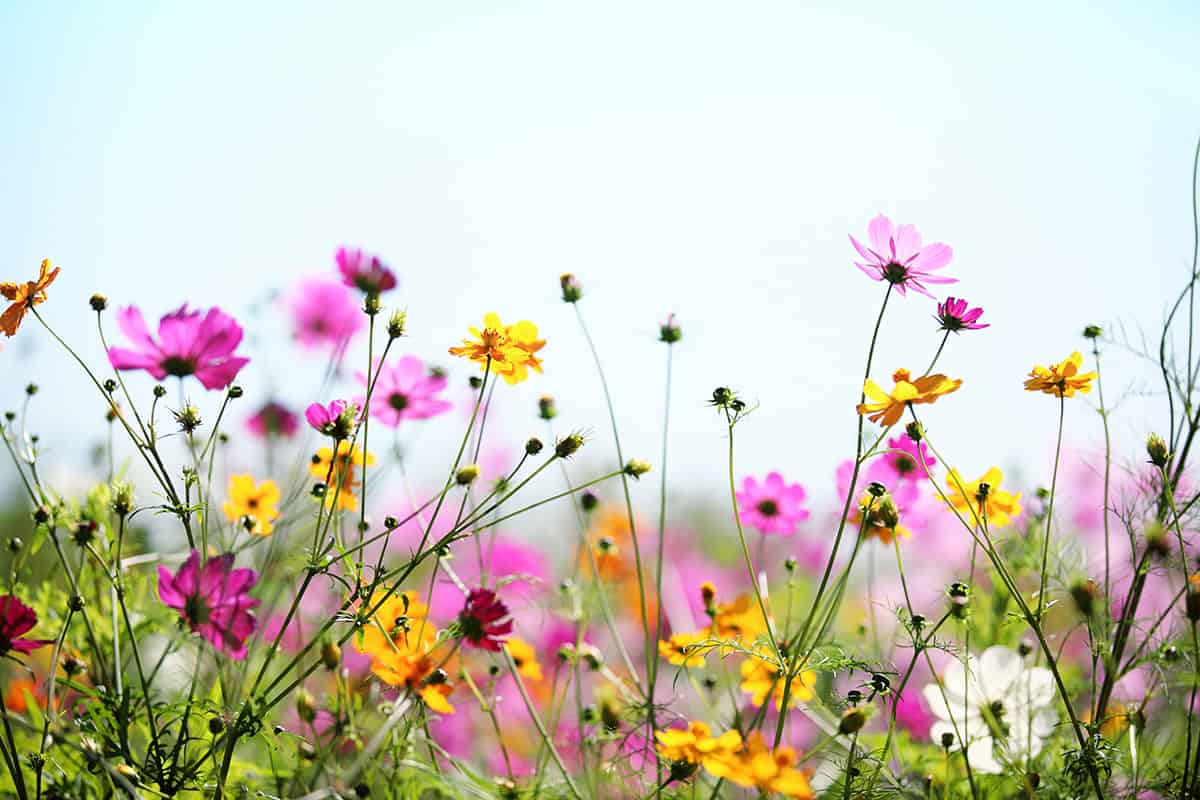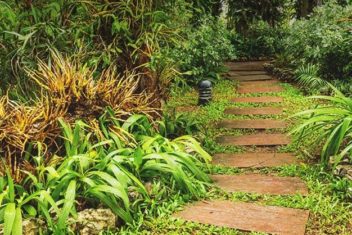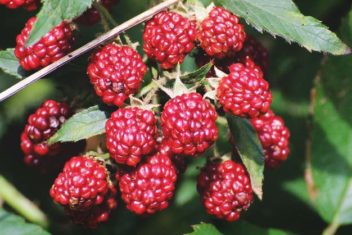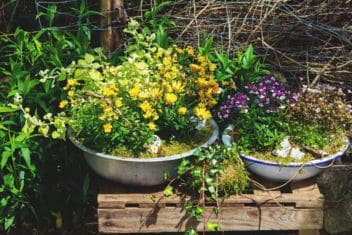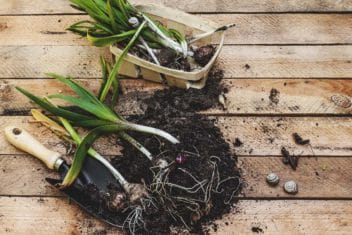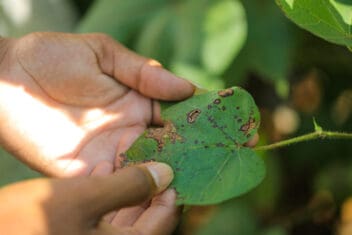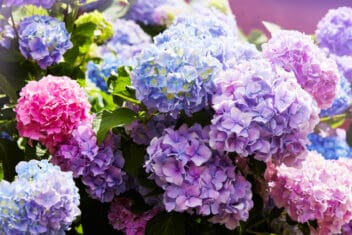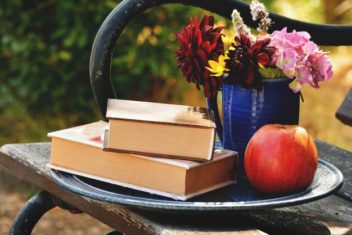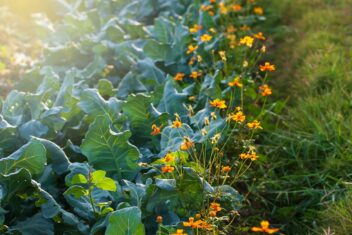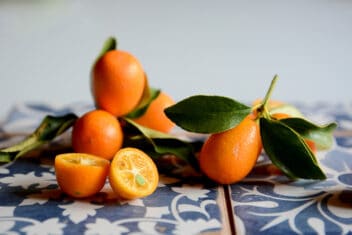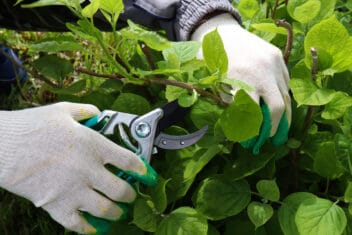All those luscious fruit and vegetable plants we love to grow in our gardens need to be pollinated to produce what we call food. This, of course, requires insects such as bees, butterflies, wasps, moths, birds, and bats, depending on the plant species.
Fortunately, there’s a great way to attract beneficial pollinators to your yard, and that’s by planting a wildflower garden.
What Constitutes a “Wildflower”
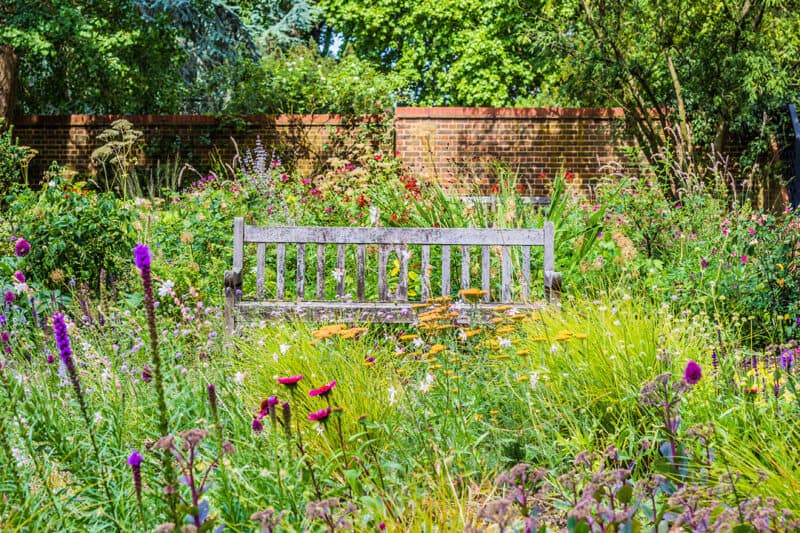
The standard definition for “wildflower” is a type of flowering plant that grows without human intervention. As such, it might seem a bit weird to plant a wildflower garden intentionally.
Generally, however, indigenous wildflowers have been obliterated in most areas in favor of lawns and cultivated flower gardens. The last few generations have established (and helped nurture) the idea that some plants are far more beautiful, valuable, and genteel than others.
Wildflowers such as daisies, poppies, marigolds, and cornflowers (aka bachelor’s buttons) are considered “common.” Vulgar, even. They’ve been relegated to the lowest caste, solely fit for peasant posies and animal fodder.
In contrast, roses, peonies, irises, and delphiniums are considered elegant. These are desirable species that people have been cultivating to prove their social status.
In the simplest terms, the idea has been that if a species can grow well enough on its own, out in the country, then it’s too basic to grow in an upper-class garden.
The problem is that they’re not exactly beneficial to your food garden unless you live in a region where these “special” species grow indigenously.
Why are These Wild Species Important?
Wildflowers and the pollinators that fertilize them developed together over time. Let’s take the humble ox eye daisy (Leucanthemum vulgare) as an example. Note that its binomial epithet is “vulgar,” meaning “common.” (Isn’t Latin fun?)
These flowers have been around for about 49 million years. As a result, local insect species such as bumblebees evolved alongside these flowers.
They learned how to use the daisies’ nectar most efficiently, and in turn, these blooms benefitted from insect care that matched their needs.
One of the species that L. vulgare attracts is the hoverfly (Syrphidae spp.). [1] You might not think much of these insects, but guess what? Their larvae feed pretty much exclusively on aphids.
Connecting the dots yet?
Cucurbits like squashes and cucumbers, as well as leafy greens and beans, are incredibly vulnerable to aphid infestations. What do you think happens if you either plant ox eye daisies around these species or companion plant them in the garden?
Exactly. The flowers attract (and are pollinated by) adult hoverflies. These hoverflies also head over to those tasty cucumber flowers because, OH MY GRAVY, their nectar is delicious.
Hey, while there, why not deposit some eggs too? And oh look, those larvae will nom on aphids while they’re there.
Bonus: these daisies are members of the Asteraceae family. That means they’re related to echinacea, asters, cornflowers, fleabane, and sunflowers.
These generally attract similar insect species, so the aphid-eating hoverflies that love daisies should also appear on these blooms too.
(Just don’t cultivate sunflowers any place where they’ll shade out light-hungry plants. That’ll defeat your initiatives pretty fiercely.)
These Flowers Can Help Save Our Pollinators
There’s another reason to cultivate a wildflower garden that has a massive impact on your food garden’s success: saving native pollinators.
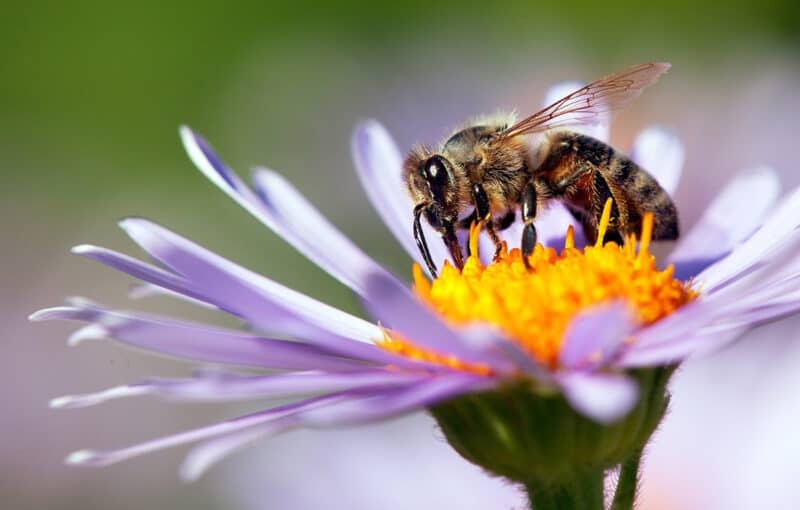
You may not be aware, but bee colony collapse is a MASSIVE issue worldwide. Decades of pesticide use by agricultural growers have all but obliterated native pollinator species.
They slathered chemicals all over edible plants to kill off the bugs that ate those species.
The problem is that these toxins kill indiscriminately. They don’t just target aphids or cane borers: they also destroy bumblebees, honeybees, butterflies, and well, millions of others.
Humans have poisoned these species’ food supplies and obliterated much of their habitat. As a result, it’s really up to us to step up and fix this problem.
There are huge initiatives around the world to help save these native pollinators. Greenpeace’s Save the Bees campaign is just one of them: a quick online search will undoubtedly give you info on projects near you.
As a bonus, many of these initiatives offer free native wildflower seeds. All you need to do is scatter them in a sunny patch and water them on occasion, and they’ll do their job.
They’ll feed native species and offer shelter for them to breed. This will increase their numbers. If enough people pitch in with these little efforts, we can help to stabilize these populations.
Remember: no pollinators = no plant fertilization. No fertilization = no food.
That’s how important they are.
If the bees disappear, so do we.
Which Species Should You Grow?
There’s a very simple answer to this question. The wildflower species you should grow in and around your property are those that are native to your area.
Each plant species has evolved over millions of years to grow specifically in a particular area. It has adapted to the soil and sun there and rain and drought cycles, summer heat, winter cold, and potential predators.
Determine where it is that you’d like to plant your wildflower garden. Even better if there are a few areas to plant in. Then, take note of the microclimates in those areas.
This will help determine which seeds are right for your property.
For example, let’s say you’re in southern Illinois, close to the Kentucky border. Although IL is considered Midwest, KY is Southeast. A standard Midwestern wildflower garden seed mix should work well for your property, but you could also combine it with some Southeastern seeds too.
Is your soil sandy? Or clay-rich? Is it prone to drought? Are there tall trees that block out the sunshine during the day?
Take note of all these attributes for your seed search. You’ll either find a mix that’s ideal for your property, or you can mix and match individual species to create a perfect cocktail.
For example, I use perennial native Ontario and Quebec wildflower mixes for my property here in the Laurentian foothills.
That said, I also buy individual seed types for different areas. About 1/4 of my land is a sandy hillside that I can’t farm on, so I have planted the following on that area:
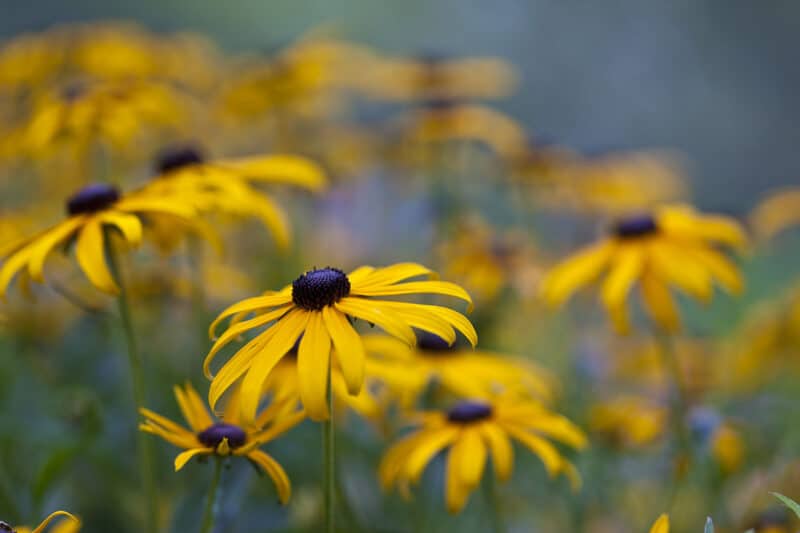
- Brown-Eyed Susan (Rudbeckia triloba)
- Butterfly Milkweed (Asclepias tuberosa)
- Eastern Columbine (Aquilegia canadensis)
- Spiked Blazing Star (Liatris spicata)
- Blue Vervain (Verbena hastata)
- New England Aster (Symphyotrichum novae-angliae)
- Yarrow (Achillea millefolium)
- Perennial Lupine (Lupinus perennis)
- Rigid Goldenrod (Solidago rigida)
- Greater Mullein (Verbascum thapsus)
- Smooth Aster (Symphyotrichum laeve)
Every year, I’m amazed at just how many pollinators flock to the wildflower patches on my land. I might even start beekeeping because they’ve become so plentiful.
Wildflower Garden Seed Resources
American Meadows is one of the best resources for wildflower seeds in the United States. It offers native species seed kits for six different regions, as well as those best suited to different soil and sun types.
Alternatively, Bulk Wildflowers is another great site.
Note: If you’re in southern Canada, then you can also benefit from the native wildflowers in the US zones closest to you.
The same wildflowers that grow in Michigan are also found in southern Ontario. The same goes for the PNW and southern British Columbia and states like North Dakota and Manitoba, or Saskatchewan.
For a Canadian-specific wildflower garden, check out Northern Wildflowers or West Coast Seeds. The latter, in particular, has great region-specific mixes to choose from.
Landlife Wildflowers is a wonderful resource if you’re in the UK, while Semences de Puy has several different wildflower mixes native to France and the Swiss Pyrenees.
Samenhaus and Saatkontor are good resources for Germany, and you can try Jyllands Frøhandel for Scandinavian mixes. However, if you’re in Iceland, you’ll have to get local seeds: the import laws are fierce.
For most of Australia, Mr. Fothergill’s is a wonderful site. Meanwhile, Garden Post is ideal for New Zealand.
As for all the locales not listed here, that’s just because I can’t read or write in the languages native to those places and can’t offer site suggestions.
How to Care for a Wildflower Garden
This is probably the best news of all: if you plant native species in the soil they’re ideally suited to, they pretty much thrive on neglect. After all, the species indigenous to your area evolved to survive in those conditions.
The wildflower seed mix that you purchase for your area will have fairly specific care requirements, all of which are really easy.
After all, these flowers have adapted to have their seeds scattered by the wind and wild animals. Neither of those things measures down an exact inch into the soil and times their daily waterings.
Seeds that require cold/moist stratification need to be sown directly outdoors in late autumn. This will allow them to overwinter beneath leaf mold and snow, then leap into action as soon as the days warm up.
In contrast, “easy to grow” mixes require you to scatter the seeds in an area that regularly gets full sun and water until they get established. After that, natural rain cycles should take care of them quite well.
Hopefully, you’re now inspired to cultivate a magnificent wildflower garden of your own this year!
Believe me when I say that every little bit helps. Just planting a small patch at the end of your property will draw—and nourish—more native species than you might imagine.
References:
- D. Clements, D, Cole, J. King, A. McClay; The biology of Canadian weeds. 128. Leucanthemum vulgare Lam., Canadian Journal of Plant Science, January 2004, Vol. 84, 10.4141/P02-112
